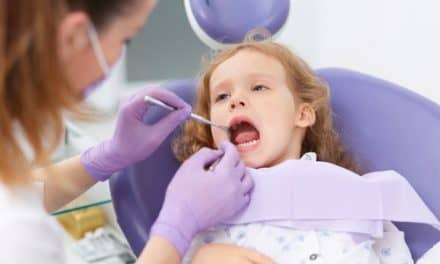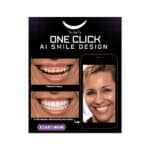When Align Technology launched its pilot Invisalign locations last year, there were orthodontists who wondered how this new approach to connecting with potential patients would affect their orthodontic practices. To keep orthodontists at the forefront of the Invisalign brand experience, John White, DDS, MSD, an orthodontist in private practice in northern Ohio, went to Align Technology with an idea the company had already been working on: doctor-owned and co-branded Invisalign centers with a consumer-friendly feel.
“I felt [Align Technology] should do something in partnership with orthodontists; otherwise, you’re engaging potential patients about Invisalign treatment and connecting them with a doctor, but you’re not getting them started in treatment when they’re right there and excited about it,” says White.
White’s motivation was about embracing a new mindset: reach the potential patient where they shop and eat, and give them the consumer experience they have been groomed to expect.
When White saw the first Invisalign locations, he was intrigued by the esthetic choices Align made to appeal to today’s consumer. “When I saw the Invisalign locations, and how they resemble the friendly environment of the Apple store where my wife, children, and I spend more than a little time, the whole concept made total sense. It changes the model,” said White, who spent 6 years as an orthodontist with the US Air Force before opening his private practice in 1988.
White, who has been a leading Invisalign doctor in northern Ohio since 2009, went to Align Technology with his business idea and learned he and the company were operating on the same wavelength – Align had been working on a similar idea to combine the consumer-friendly Invisalign retail experience with the on-site expertise and immediate treatment starts of an orthodontic practice. Within a year, last November to be exact, White’s doctor-owned and co-branded Invisalign Experience center—Smiles by White an Invisalign Experience, a pilot project in collaboration with Align Technology, opened for business. “Align knows that partnering with orthodontists is the best way to work together to help our patients get what they want in the way that they really want it. They’re being treated by a doctor. There’s somebody to talk to and interact with. Align agrees that the doctor’s role in treatment is essential. At the same time, we’re creating an environment that is more welcome and convenient for consumers that a traditional orthodontic office.”

“When you have a patient call into a traditional practice, they go through the conversation of why they’re calling, what their dentist says, and what their insurance is. When you start doing that, it puts some patients off. They can’t come in and just sort of look, feel and touch,” says White.
What sets these doctor-owned Invisalign Experience centers apart from the Invisalign locations is the hybrid layout. The first third of the space resembles an Invisalign location, and the back two-thirds is more of a traditional orthodontic practice—one that exclusively focuses on Invisalign treatment. No fixed appliances are done in a doctor-owned Invisalign Experience Center.
In that front Invisalign Experience branded space, consumers can watch informational videos about Invisalign treatment and handle sample aligners to get a feel for what treatment would involve—all before they make contact with a staff member. Once the consumer expresses interest to a staff member, an intraoral scan is taken with one of the two iTero digital scanners in the center. From this, a simulation is created to show them what their new smile may look like after Invisalign treatment. If the customer is interested, a fee range is discussed. Only after the customer indicates interest in moving forward, or at least in getting more information, is a doctor consultation scheduled. At that appointment, x-rays and photos are taken, and a digital treatment plan and financing options are discussed.

“Our office is set up so that if you had a canceled soccer practice and it’s 4 o’clock—and you just happened to be in the area, you could show up and we could probably take care of whatever you needed, as long as it wasn’t something that required preparation on our part, like having a new set of aligners in,” says White, who is a faculty member in the orthodontics department at Case Western Reserve School of Dentistry. And when a patient does have an appointment at this location, that appointment is designed to be brief. “You’re expected to walk in, be treated, and get out of there in 5 to 10 minutes—unless you hit lunch time on a busy day.” According to White, most customers tend to live or work in the area, popping in during their lunch break or after work. “We are open until 6, and we have quite a few walk-ins from 4:30 to 5:30,” White adds.
Staffing this type of office requires a different approach. In addition to a technician and doctor who are on site during business hours, the model demands an employee with a strong background in sales. For White’s location, that employee is also a licensed x-ray tech.

In terms of marketing, White has taken an aggressive approach. Over the past 4 years, he has been focused on practice growth and devotes 12% of his overall annual production towards marketing, relying heavily on media buys. However, word-of-mouth referrals are quickly ticking up at this center. Among those customers, there is about an 80% conversion rate. “We know that those referrals that come in are more likely to start,” says White.
Since word got out that White was launching his doctor-branded Invisalign Experience center, he’s been fielding daily calls and emails from peers interested in the model. They also see the shift in consumer expectations, both in terms of customer experience and esthetic orthodontic treatment. “I grew up being a doctor treating patients, but now, there is this idea of being a provider serving consumers,” adds White.
The important thing, and what White’s pilot project with Align Technology aims at, is to make sure orthodontists are always at the forefront of how orthodontic consumers are being served. OP











